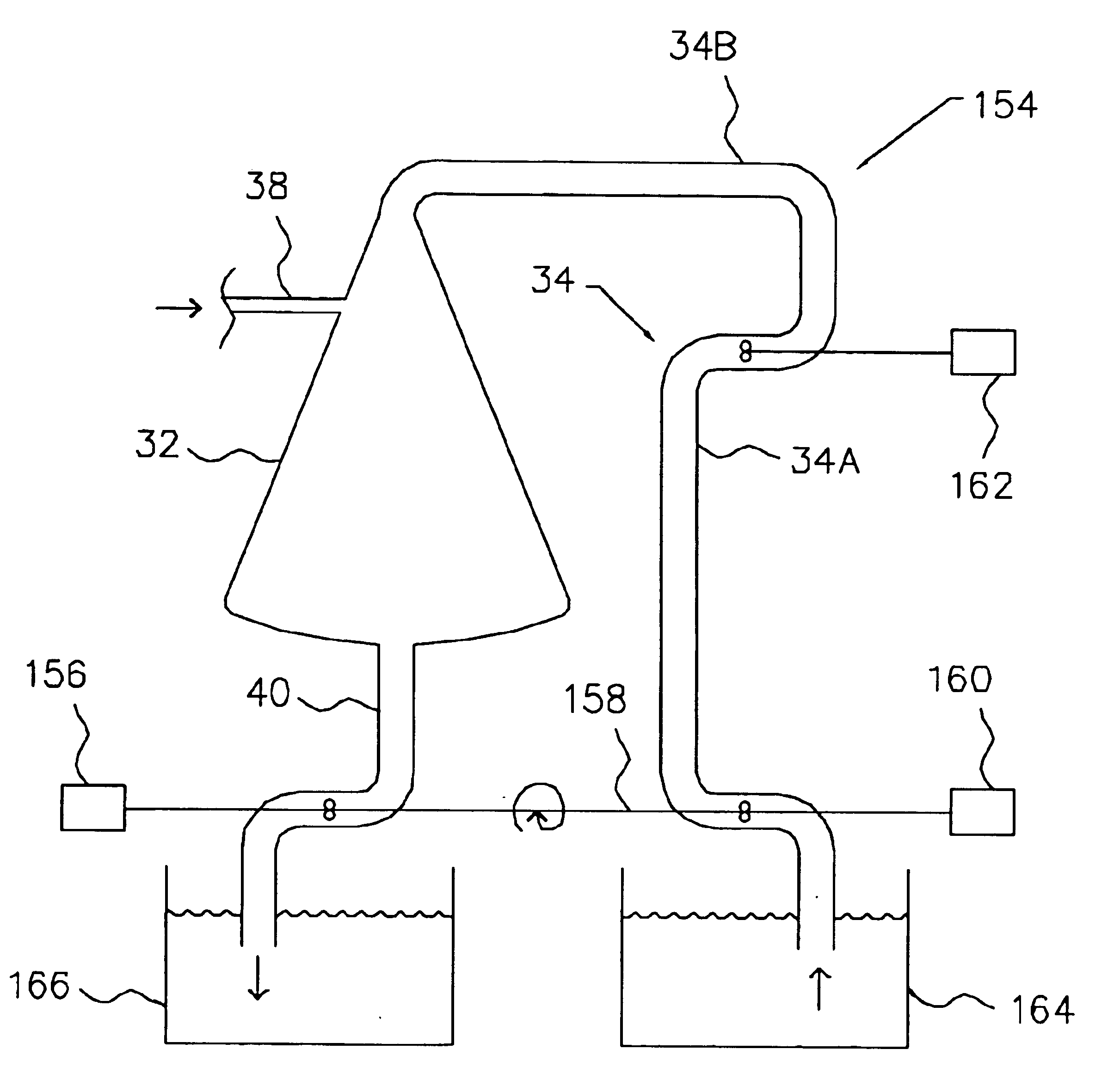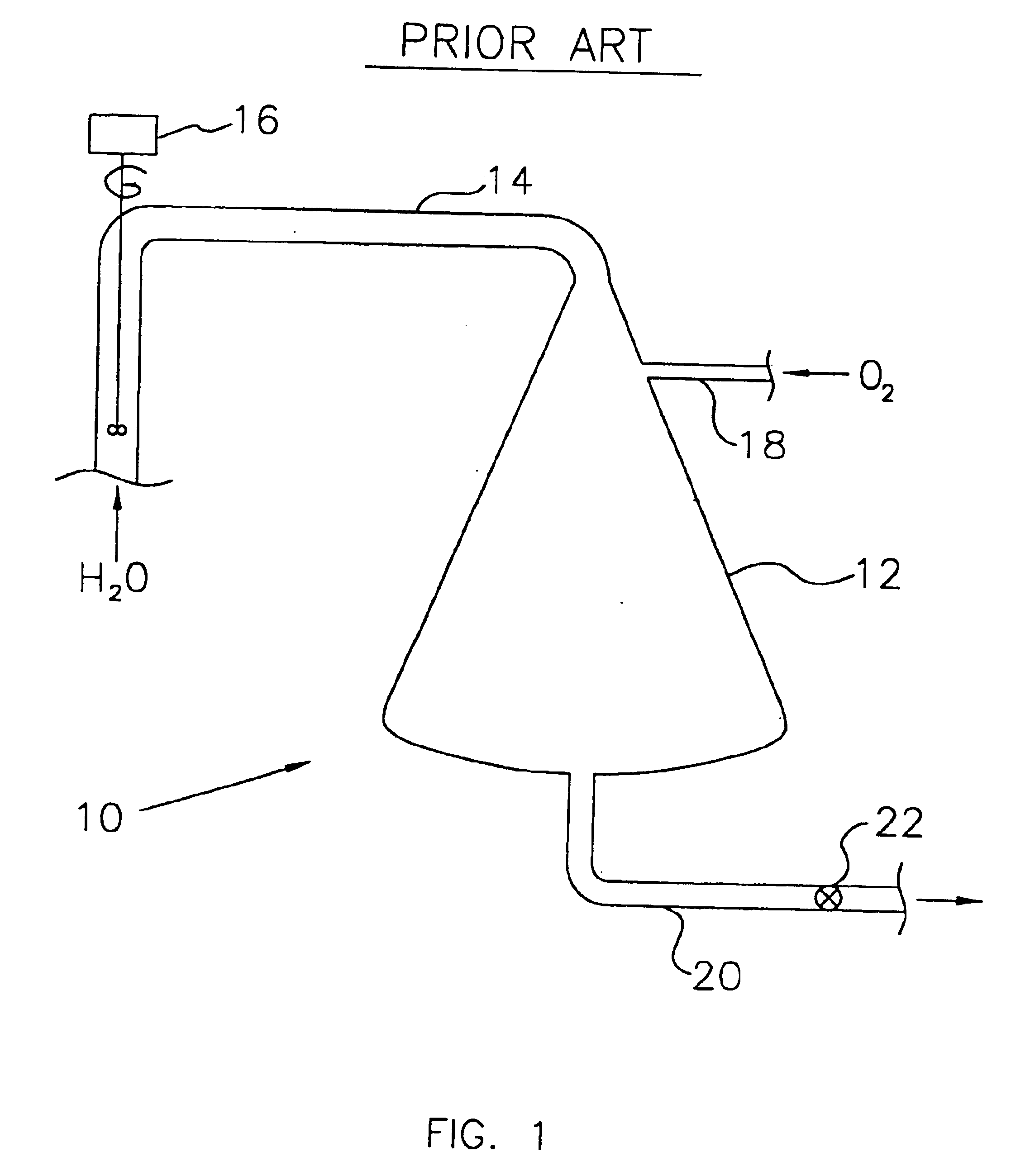Gas transfer energy recovery and effervescence prevention apparatus and method
a technology of gas transfer energy recovery and effervescence prevention, which is applied in the directions of machines/engines, transportation and packaging, dissolving, etc., can solve the problems of limited natural absorption of oxygen from the air into the water, high microbial oxygen demand, and natural oxygen aeration processes cannot begin to provide sufficient oxygen resources, so as to reduce effervescence loss and minimize energy consumption
- Summary
- Abstract
- Description
- Claims
- Application Information
AI Technical Summary
Benefits of technology
Problems solved by technology
Method used
Image
Examples
second embodiment
Referring now to FIG. 3, there is shown a schematic view of a gas transfer system according to the present invention having a regenerative turbine driving an electrical generator. In this embodiment, system 50, like system 30 of FIG. 2, includes reactor32, liquid inlet 34, feed pump 36, gas inlet 38, and outlet 40. System 50 also includes regenerative turbine 52 is operatively connected to electric generator 54. During operation, the pressurization of reactor 32 by feed pump 36 also results in operation (by pressure) of regenerative turbine 52. The operation of regenerative turbine 52 results in provision of energy (power) to electric generator 54.
third embodiment
FIG. 4 shows a schematic diagram of a gas transfer system according to the present invention having a regenerative turbine operatively connected by its shaft to the shaft of the feed pump of the system. System 70, like systems 30 and 50 of FIG. 2 and FIG. 3, respectively, includes reactor 32, liquid inlet 34, feed pump 36, gas inlet 38, and outlet 40. System 70 also includes regenerative turbine 72. In this embodiment, feed pump 36 includes shaft 74 which serves as a drive mechanism for feed pump 36. Regenerative turbine 72 includes shaft 76 which serves as a drive mechanism for regenerative turbine 72. Feed pump 36 is coupled with regenerative turbine 72 by v-belt drive 78, operatively connected to shaft 74 of feed pump 36 and to shaft 76 of regenerative turbine 72.
During operation of the embodiment of FIG. 4, operation of feed pump 36 includes rotation of shaft 74. Rotation of shaft 74 includes movement of v-belt drive 78, which in turn includes rotation of shaft 76 of regenerativ...
fourth embodiment
As is discussed in further detail herein, it is advantageous to place the depressurization zone (regenerative turbine or throttling valve) under increased hydrostatic pressure such as at the bottom of a water column to reduce the relative supersaturation, and thus the potential for effervescence. One such example is shown in FIG. 5. FIG. 5 shows a schematic view of a gas transfer system according to the present invention having a regenerative turbine directly coupled with the feed pump of the system and with the regenerative turbine positioned at the bottom of a water column. System 90 includes reactor 32, liquid inlet 34, feed pump 36, gas inlet 38, and outlet 40. In addition, system 90 includes regenerative turbine 92 is connected by shaft 94 to feed pump 36, and regenerative turbine 92 is placed at the bottom of water column 96. The use of water column 96, as discussed below, operates to prevent effervescence of supersaturated discharge.
The effective supersaturation of water pass...
PUM
| Property | Measurement | Unit |
|---|---|---|
| saturation concentration | aaaaa | aaaaa |
| dissolving | aaaaa | aaaaa |
| concentration | aaaaa | aaaaa |
Abstract
Description
Claims
Application Information
 Login to View More
Login to View More - R&D
- Intellectual Property
- Life Sciences
- Materials
- Tech Scout
- Unparalleled Data Quality
- Higher Quality Content
- 60% Fewer Hallucinations
Browse by: Latest US Patents, China's latest patents, Technical Efficacy Thesaurus, Application Domain, Technology Topic, Popular Technical Reports.
© 2025 PatSnap. All rights reserved.Legal|Privacy policy|Modern Slavery Act Transparency Statement|Sitemap|About US| Contact US: help@patsnap.com



